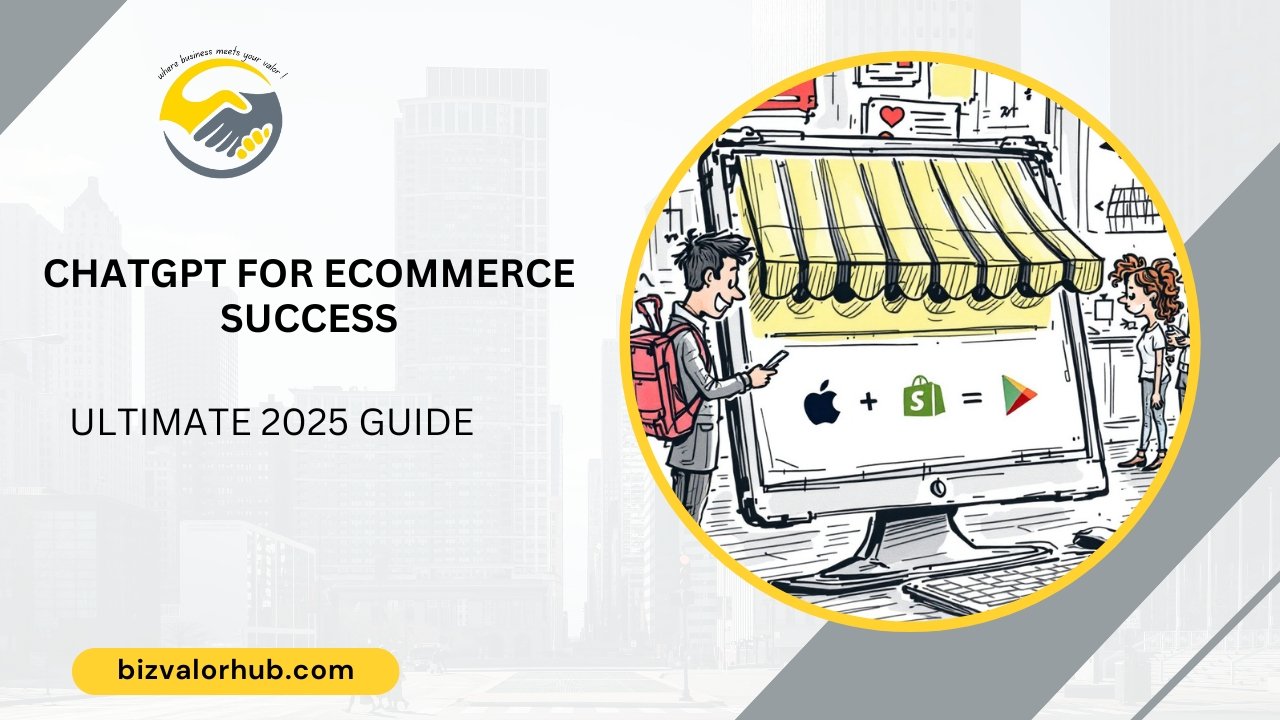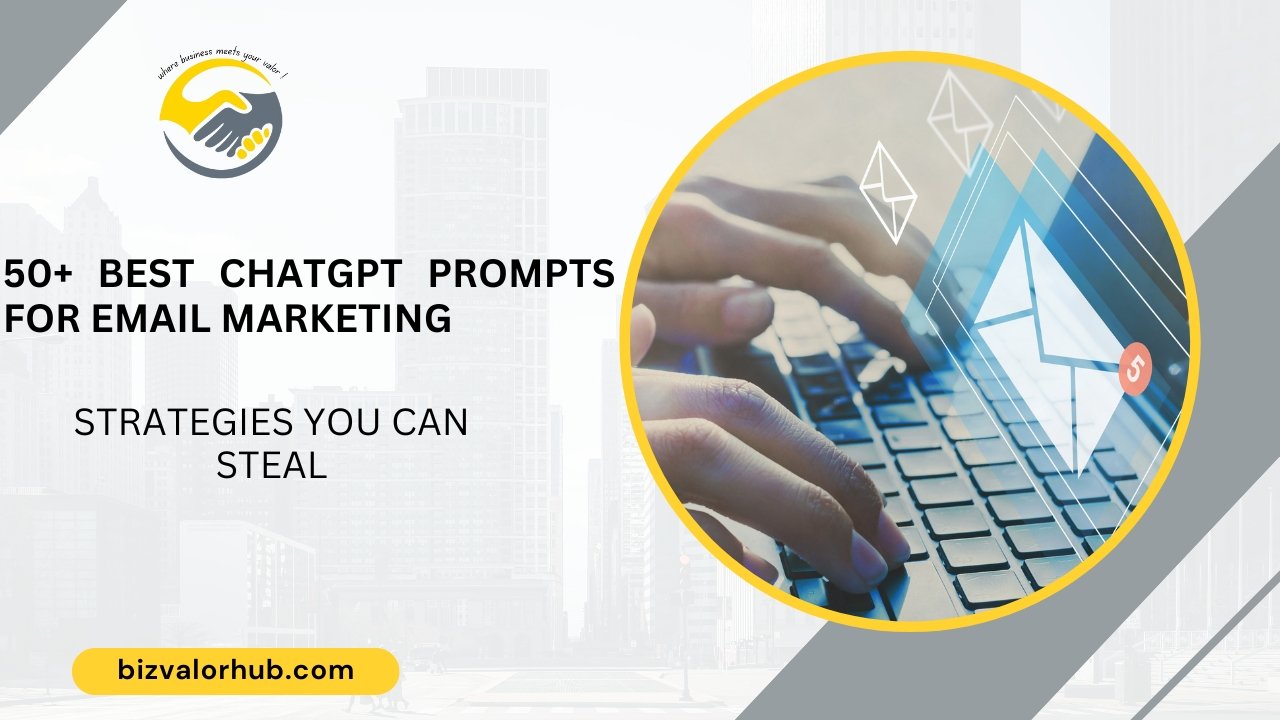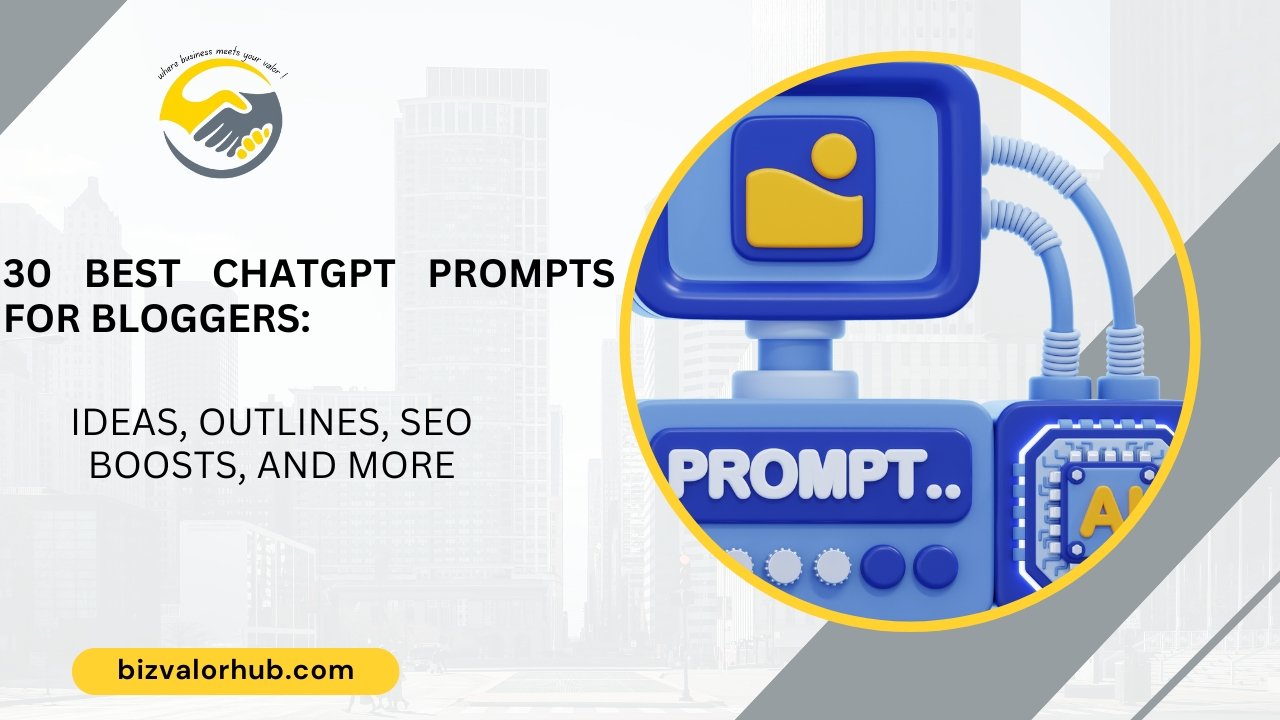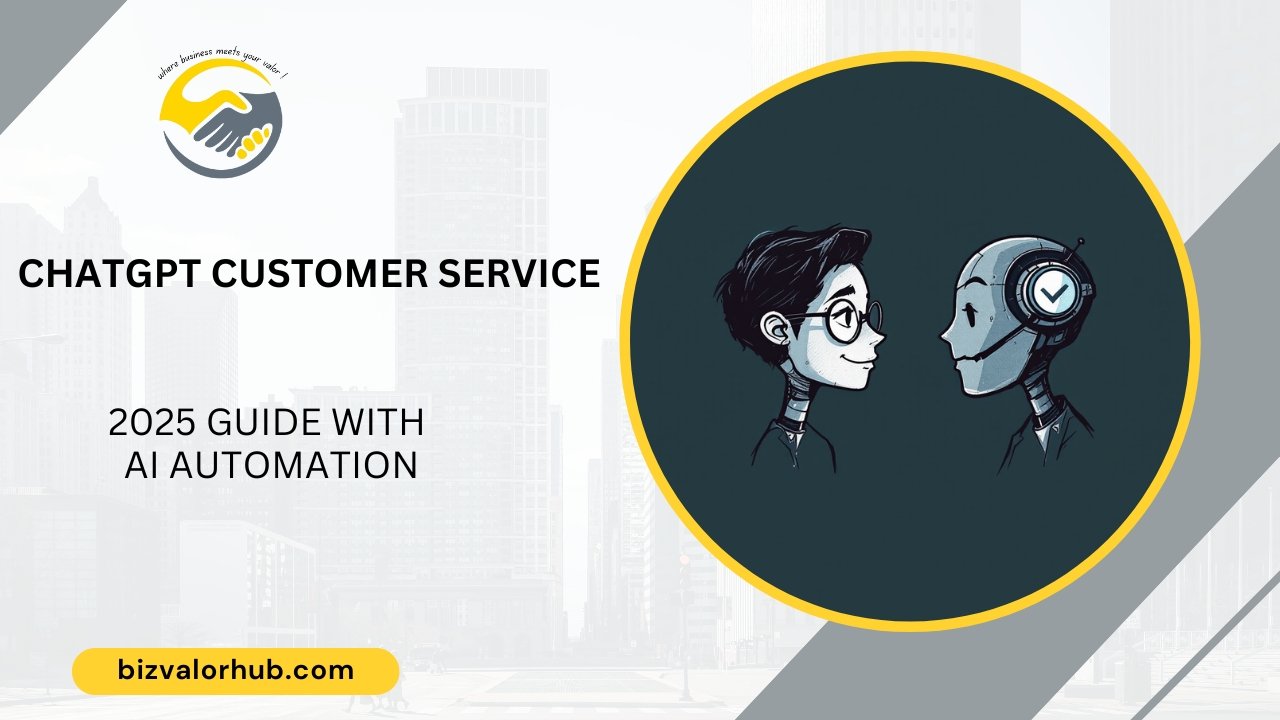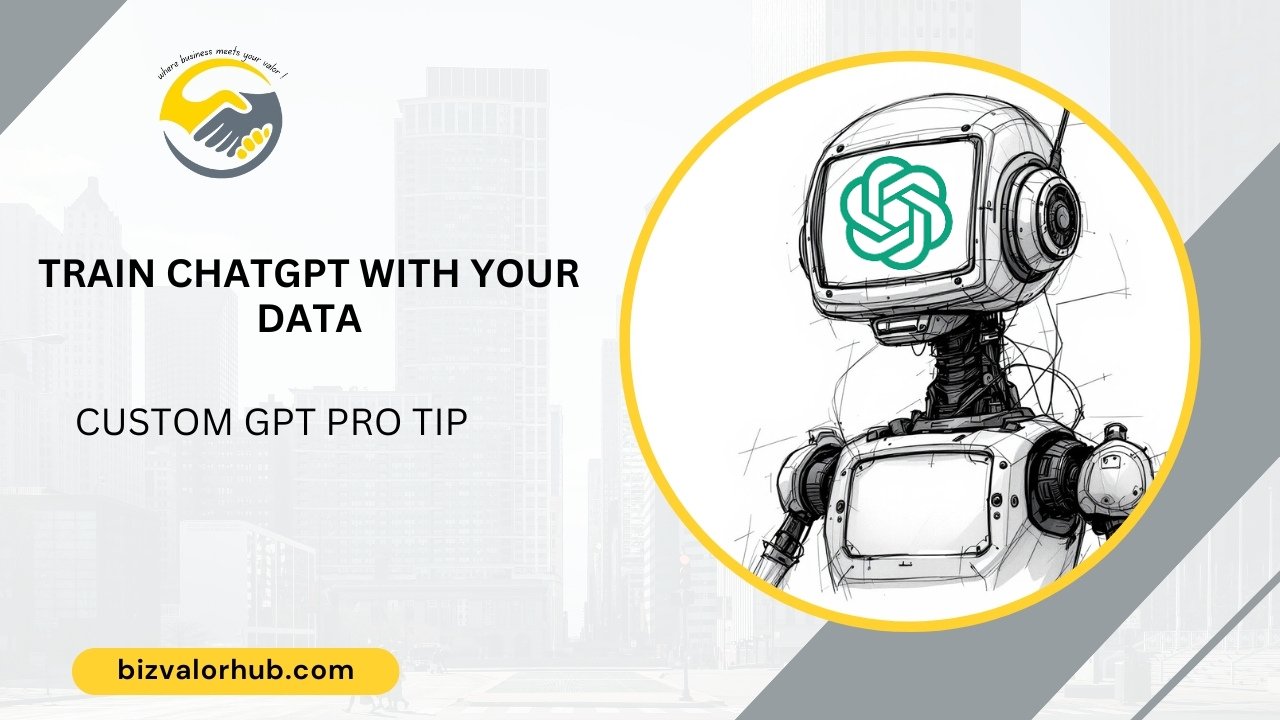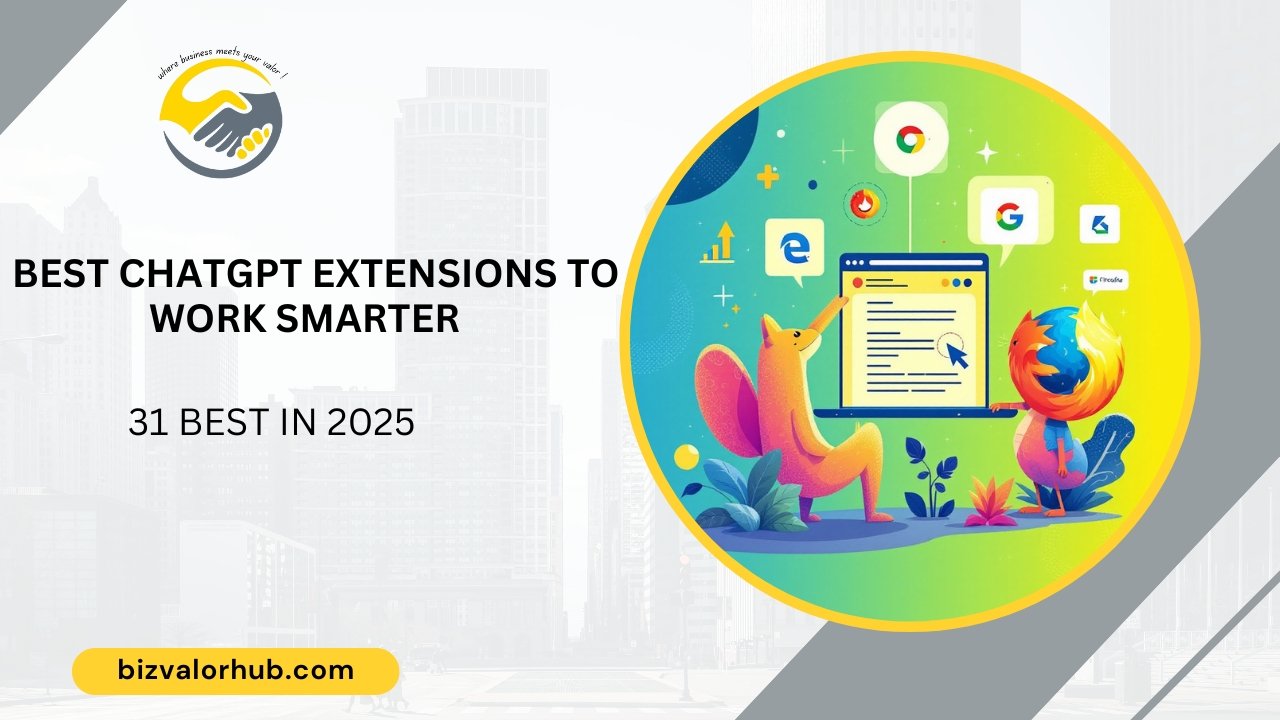If you’re ready to shake up your e-commerce game, AI tools like ChatGPT might just be the secret weapon you didn’t know you needed. Whether you’re into drop shipping, selling custom products, or running a print-on-demand store, embracing AI can help you fine-tune your strategies, discover new product ideas, and even design your website. And the best part? You don’t need to decode a single ounce of tech lingo to make it work. Let’s break things down step-by-step.
Getting Started: Using ChatGPT Without the Tech Stress
Getting Connected with Ease
First things first: head over to OpenAI’s website and create an account. Boom—you’re ready to interact with ChatGPT. No coding. No tech-savvy dance moves. You just plug in your question like you’re texting a friend.
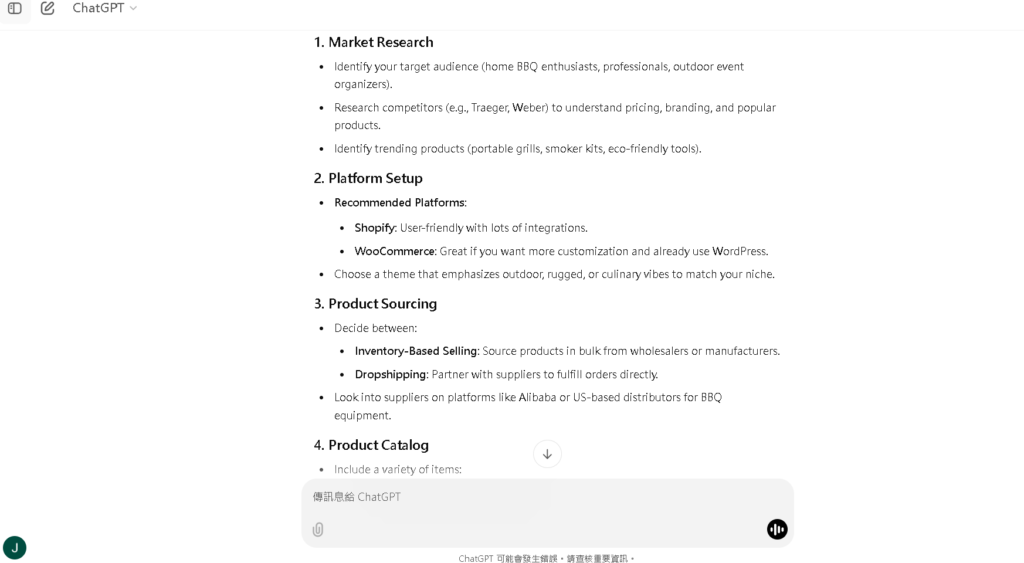
Imagine you’re selling quirky lighters through drop shipping. Ask ChatGPT something like, “Hey, I sell custom lighters. What are five marketing strategies I should try?” It’ll whip up a list of clear, actionable ideas to get you rolling.
Benefits of ChatGPT for Ecommerce
Here’s where things get really exciting. By adopting ChatGPT, e-commerce businesses unlock several significant benefits that not only improve operations but also pave the way for higher customer satisfaction. Let’s get into the specifics:
Improved Customer Service
No one likes waiting forever for a reply about shipping or returns. ChatGPT works 24/7, handling FAQs, guiding purchases, and answering detailed product questions instantly. It keeps things polite and on-brand, giving your team time for work that actually needs a human touch. Happier customers, fewer abandoned carts—win-win.
Personalized Shopping Experiences
Netflix nails your favorite shows. Amazon? Total mind reader. ChatGPT does the same magic for your store. A customer asks, “What gift works for my sister who’s into hiking?” Boom—you give spot-on suggestions, not lame general stuff. It’s like having a personal shopper for every visitor.
ChatGPT analyzes data, suggests products, upsells, and cross-sells—all while you chill.
Process Automation
Running an online store is chaos—tagging products, updating descriptions, and sorting emails. Enter ChatGPT. It automates inventory updates, writes SEO-friendly product descriptions, and even handles abandoned cart emails. Bonus: no coding needed.
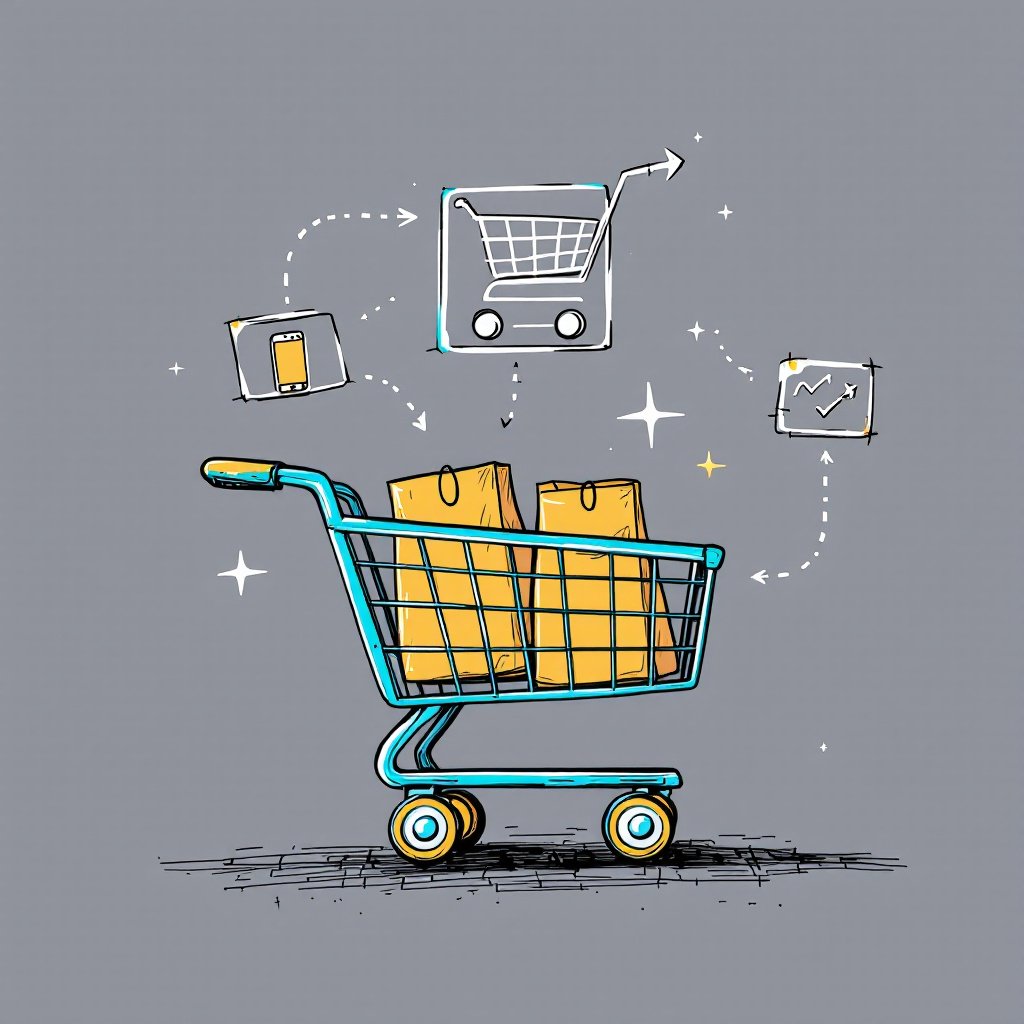
🔥Hunting Down Hot Products to Sell
Using TikTok for Trendspotting
Have you scrolled TikTok lately? There’s this magical hashtag, #TikTokMadeMeBuyIt. Use it. Search it. Bask in the product ideas. Everything from portable espresso makers to foldable yoga mats lives here. Plus, you can click on seller profiles, hop to their e-commerce websites, and spy on how they’re doing their thing.
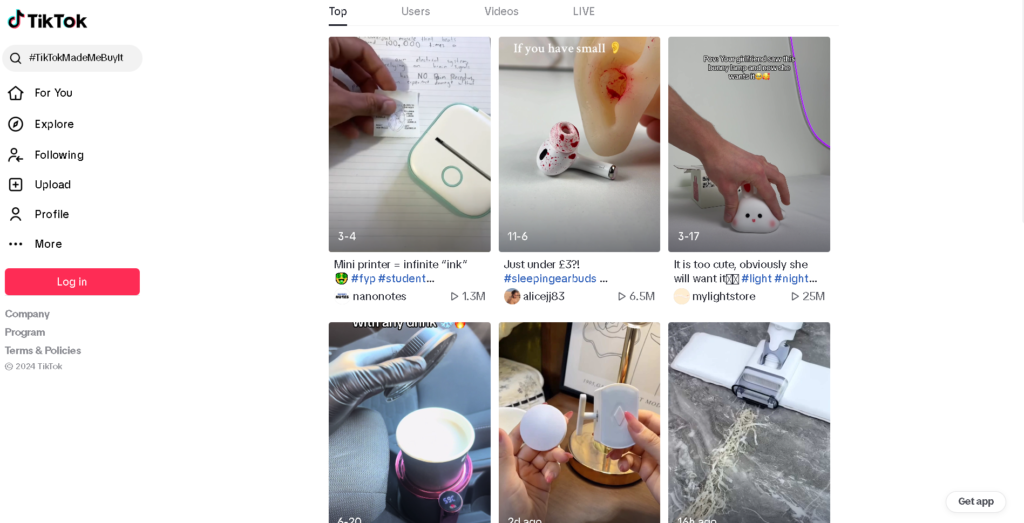
Spying on Competitors
Here’s where it gets juicy. See something stylish in a competitor’s shop? Screenshot it. With a combo of ChatGPT and tools like MidJourney, you can not only mimic their design but take it up a notch. AI lets you brainstorm ways to elevate that amateur aesthetic into something sleek and irresistible.
📢Chatgpt for Your Ecommerce – Marketing Genius
Let’s Talk Strategy
Picture this: you’re selling yoga mats and need a killer marketing plan. You ask ChatGPT for five strategies, and here’s what you might get:
- Targeted Facebook/Instagram Ads (great for fitness junkies).
- Partnering with yoga influencers (hello, viral potential).
- Building SEO-rich blog content around yoga tips (#FreeOrganicTraffic).
- Launching a loyalty program for repeat customers.
- Running Google search ads with precise keywords.
These strategies help you reach the right audience and build long-term loyalty. Using ChatGPT is more than tossing AI on your site. Tailor it to your brand, and it’s like welcoming a new team member who truly understands your business.
Simplifying Influencer Marketing (Even for Newbies)
Influencer marketing often feels overwhelming—but ChatGPT simplifies the process. It creates clear, concise plans and even generates DM templates like:
“Hi [Name], I love your recent post about [related product]! I think my [product] would align perfectly with your vibe.”
This breaks influencer marketing into easy, actionable steps anyone can follow. Think of it as asking the “popular kid” to recommend your product.
SEO Made Easy
SEO doesn’t have to feel like rocket science. For example, drop in a product name like “Pink Yoga Mat for Women” and ChatGPT transforms it into something optimized like:
“Premium Anti-Slip Pink Yoga Mat for Home & Studio Workouts.”
It can also create meta descriptions, alt text, and even blog post ideas to boost organic traffic. With a few prompts, you can make your product pages SEO-friendly without breaking a sweat.
🛠️Choosing and Integrating ChatGPT into Your Ecommerce Store
Choosing the Right ChatGPT Solution
ChatGPT is packed with potential, but not every tool fits every store perfectly. Keep these factors in mind when selecting your solution:
- Use Case Compatibility: Are you using ChatGPT for customer service, content creation, or inventory management? Choose the features that work best for your needs.
- Scalability: Planning for business growth? Pick a solution that grows with you.
- Accessibility and Support: Ensure the tool provides strong customer support—especially if you’re not tech-savvy.
Integration with E-commerce Platforms
Your e-commerce platform is the beating heart of your business, and ChatGPT integrates seamlessly with major names like Shopify and WooCommerce. Here’s what to consider:
- Plug-Ins and Apps: Many platforms already have ChatGPT-compatible plug-ins.
- APIs for Easy Integration: If coding isn’t your thing, most solutions provide APIs for smooth setup.
- Cross-Platform Compatibility: Sync your new AI with tools like CRMs or marketing software to ensure a cohesive tech stack.
🎨Design Like a Pro (Without Being One)
Building Stunning Websites with AI
Struggling with website design? ChatGPT can suggest layout concepts tailored to your products. For instance:
- Selling tech gear? ChatGPT might recommend a sleek, futuristic theme with bold colors.
- Yoga products? Go minimalist with soft pastel tones and clean typography.
It provides instant creative direction, saving you time and effort in planning your store’s design.
Leveraging Visual Tools Like MidJourney
Once you’ve nailed the design concept, bring it to life with tools like MidJourney or DALL-E 2. These AI-powered platforms turn your vision into professional-grade visuals. From futuristic themes and bold design prompts to minimalist layouts, you can create imagery that makes your store stand out.
Need inspiration? Screenshot competitor designs, then tweak the layouts or graphical elements to develop something that aligns with your brand. MidJourney empowers you to add distinctive touches so your store never looks cookie-cutter.
Customizing ChatGPT for Your Brand
To maximize ChatGPT’s potential, make sure it feels like an extension of your brand. Here’s how:
- Define Your Voice: Whether quirky, professional, or casual, align responses with your brand personality.
- Set Boundaries: Prevent ChatGPT from providing irrelevant or off-brand suggestions.
- Train on Data: Load your store’s FAQ, product details, or policies to provide accurate, on-brand responses from Day One.
Cross-Checking Competitor Strategies
Looking to outperform your competition? Combine ChatGPT’s analytical abilities with competitor insights to identify key opportunities. For example:
- Use ChatGPT to analyze competitor keywords, ad copy, or product descriptions that are driving their success.
- Pinpoint weak spots in your own strategy, then refine SEO, marketing, or product page optimizations accordingly.
This tailored approach ensures you gain an edge in your market without reinventing the wheel.
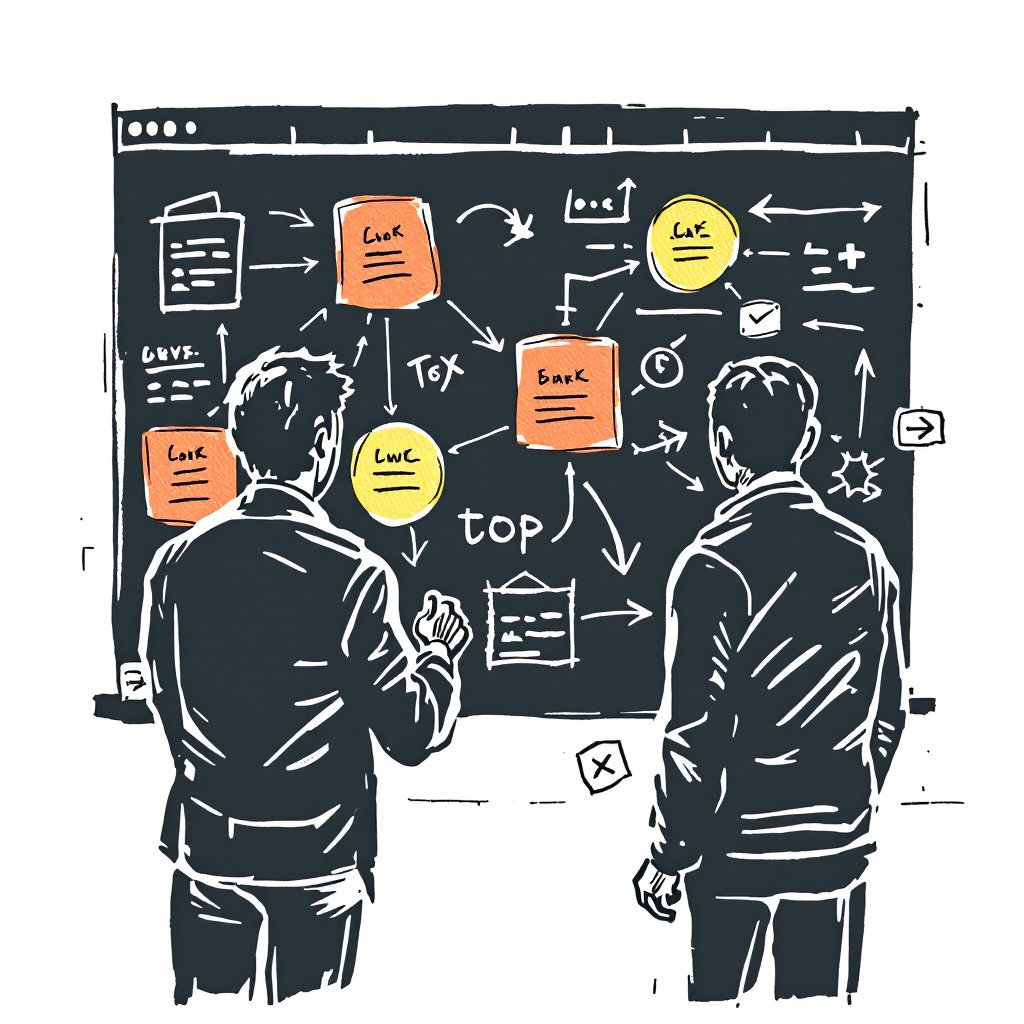
🤝Enhancing Customer Experience with ChatGPT
Using ChatGPT for Ecommerce is more than just a tech thing—it’s about continually elevating the customer journey. By employing its intuitive AI capabilities, businesses can offer timely and personalized experiences to users.
24/7 Customer Support
Imagine a life where your store caters to customers all the time. ChatGPT takes care of that effortlessly by providing round-the-clock support. Whether it’s 2 p.m. or 2 a.m., ChatGPT is at the frontlines, ready to assist customers with shipping questions, product inquiries, or even tracking down an elusive promo code they swore they had.
It’s quick, accurate, and—let’s be honest—way more patient than most of us before morning coffee. This type of support translates into:
- Faster response times: No one likes waiting. ChatGPT ensures your customers don’t have to.
- Reduced workload for your team: Let human agents focus on high-value tasks that require emotional intelligence or decision-making.
- Increased trust and satisfaction: Consistent support builds loyalty and minimizes frustrations.
Personalized Product Recommendations
We all know the magic of walking into a store and having someone say, “This is just your style.” ChatGPT essentially replicates that vibe—digitally. By analyzing customer behavior, previous interactions, and preferences, it churns out personalized product recommendations that genuinely resonate with individual users.
For example, a customer asks, “Which cozy sweaters are on sale?” ChatGPT doesn’t just spit out a random list. Instead, it sorts through your inventory to highlight options based on the person’s past purchases, budget, and even preferences like color or fit.
Here’s what it brings to the table:
- Upselling and cross-selling opportunities: Suggest matching accessories or add-ons naturally.
- Customer delight: Offering exactly what someone needs (sometimes before they even know it!) creates memorable shopping experiences.
- Sales boost: Happy, guided customers translate into repeat business and higher revenue.
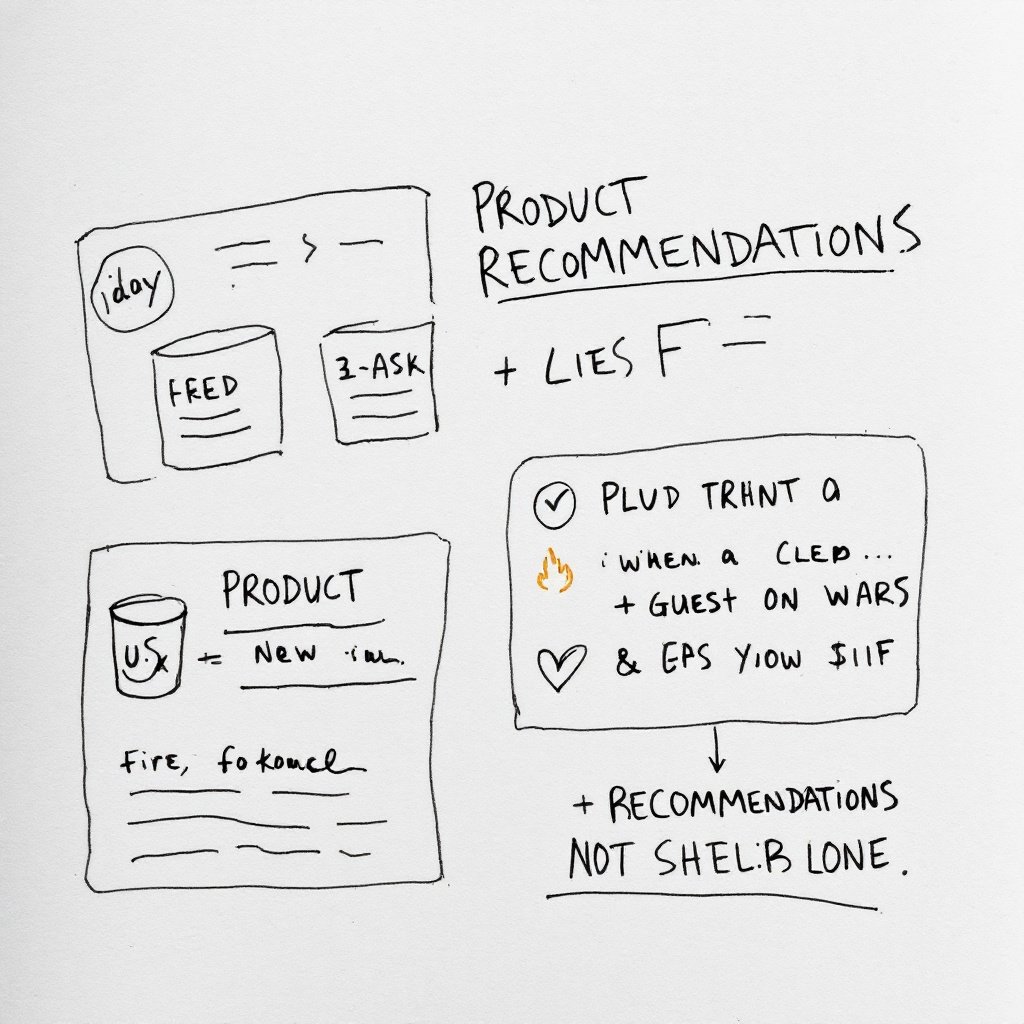
By weaving personalization into every interaction, ChatGPT doesn’t just sell—it connects. Think of it as a bridge between customers and the products they’ll actually love.
In short, integrating ChatGPT into your e-commerce store isn’t just an upgrade; it’s a promise to your customers that you’re listening, understanding, and ready to deliver—whenever they need you.
✅Best Practices for Using ChatGPT in E-commerce
Using ChatGPT for Ecommerce is like discovering a Swiss Army knife for your online store. It can do so much more than answer standard customer questions. From crafting product descriptions that sell to assisting with real-time customer interactions, this AI tool can take your store’s performance to the next level. Let’s dive into the practices that will ensure you get the most out of ChatGPT.
Training ChatGPT for E-commerce-Specific Queries
Imagine training a new employee about your business—it requires clear directions, real-world examples, and regular updates. ChatGPT is no different. Teaching it how to handle e-commerce-specific scenarios ensures it delivers accurate and helpful responses.
Here’s how to train ChatGPT effectively:
- Upload FAQs and Database: Feed it critical information like shipping policies, product specs, and common inquiries. This gives the AI a strong foundation to handle customer requests accurately.
- Simulate Scenarios: Test the AI with mock conversations. For example, ask, “Does this shoe come in half sizes?” and fine-tune responses to ensure it understands product-specific queries.
- Regular Updates: Got a seasonal sale or a new product launch? Update ChatGPT regularly so it’s aligned with your latest information. This ensures customers always get relevant answers.
By investing in proper training, you’ll ensure your ChatGPT assistant operates at its full potential right from the start.
🚀RocketingYour Content Creation
ChatGPT can play a massive role in streamlining content creation—from writing product descriptions that spark interest to brainstorming fresh blog ideas that drive traffic.
⭕Writing Product Descriptions That Sell
Got a dull product summary? Ask ChatGPT to rewrite it with flair. For example:
“Rewrite this description in a conversational, sales-friendly tone.”
With just a prompt, ChatGPT can provide catchy, sales-driven copy aligned with your brand’s tone—whether it’s sleek, funny, or professional.
⭕Generating Blog Ideas
Need content to attract visitors? ChatGPT is your idea machine. For example, input:
“Give me 10 blog ideas for yoga gear,”
and you’ll get actionable topics like:
- “5 Must-Have Accessories for Every Yogi”
- “How to Choose the Perfect Yoga Mat for Your Practice”
These suggestions will help fill your content calendar while driving organic traffic to your store.
Handling Complex Customer Interactions with ChatGPT
Let’s face it—customer support is rarely straightforward. From lost orders to damaged goods, there are scenarios where a quick AI response isn’t enough. However, ChatGPT can manage even these complex situations through strategic protocols.
- Escalation Protocols: Train ChatGPT to recognize complex scenarios and gracefully escalate them to a human representative. For example, it might say:
“Hmm, this requires extra attention. Let me connect you to our support team!”
This ensures customers feel supported without frustration. - Layered Interaction: For multi-step issues like refunds or damaged products, ChatGPT can collect crucial information upfront (e.g., order numbers, photos) before handing it off to a human agent. This streamlines processes and saves valuable time for both parties.
Combining AI efficiency with human expertise ensures every customer leaves feeling satisfied and valued.
Monitoring and Iterating ChatGPT Performance
Think of ChatGPT as a new employee—you need to oversee its performance, provide consistent feedback, and tweak its systems to maximize results. Monitoring tools and data-driven strategies are essential.

- Leverage Analytics: Use tools like sentiment analysis or query resolution rates to track ChatGPT’s effectiveness. Are inquiries resolved quickly? Are responses frustrating customers?
- Encourage Feedback: Add post-chat surveys like, “Was this helpful?” to identify weak spots and improve the AI’s responses.
- Iterative Updates: Regular improvements based on real customer interactions are crucial. If the same question keeps popping up, adjust the AI’s training promptly.
Optimizing ChatGPT is an ongoing process—just like growing your business, it thrives with constant evolution.
⚠️Challenges of Using ChatGPT in E-commerce
While integrating ChatGPT for Ecommerce can feel like adding an all-star player to your roster, it’s not all smooth sailing. Like any tech, ChatGPT comes with its quirks and challenges, and ignoring these can turn your shiny new AI assistant into a less-than-helpful teammate. From tech hiccups to customer trust hurdles, let’s break it down—and talk solutions.
Technical Limitations and Solutions
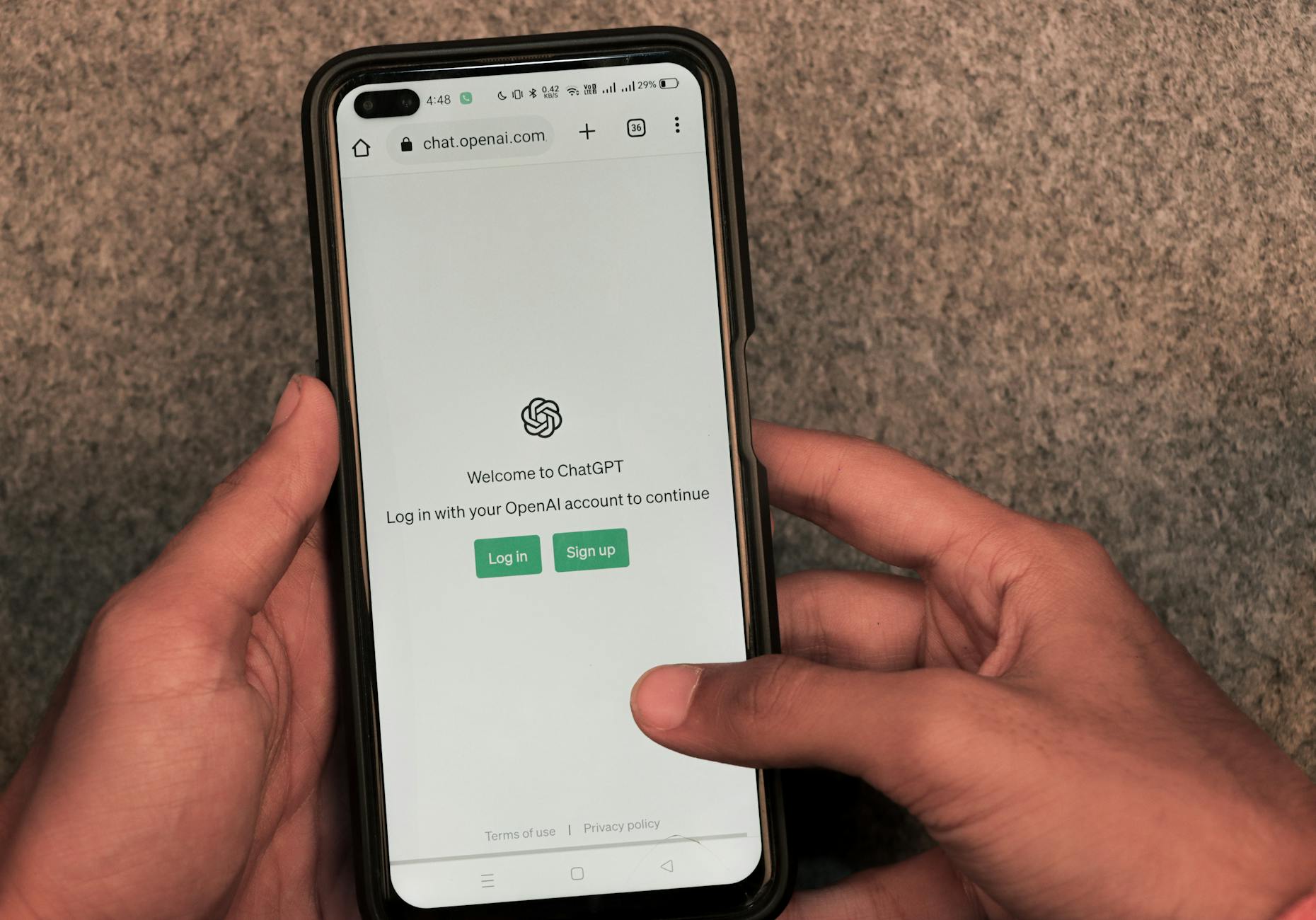
Start using any AI, and the first thing you’ll notice is the reality check of its limitations. It’s like discovering that your “all-knowing” tool doesn’t actually know everything—and sometimes, gets things flat-out wrong. Here are some common roadblocks and practical ways to solve them:
- Contextual Misinterpretations: ChatGPT, as brilliant as it is, can struggle with nuanced or deeply contextual customer questions. For instance, an inquiry like, “Is this item safe for a six-month-old?” may fall into a gray area of vague or overly cautious responses.
- Solution: Supplement ChatGPT’s dataset with detailed FAQs and product-specific information. Regular updates ensure it becomes a sharper assistant, not one stuck answering, “Not sure, but maybe check with a doctor?”
- Handling Complex Issues: Let’s face it—AI can fumble when issues are multi-layered, like resolving complaints involving multiple purchases or returns.
- Solution: Implement escalation protocols where ChatGPT recognizes its limits and shifts the query to a human rep. Think of it like knowing when to pass the ball instead of forcing a shot into a blocked lane.
- Reliance on Dated Information: ChatGPT’s responses are only as good as its training data. If it’s outdated, it might recommend solutions or products that are barely relevant anymore.
- Solution: Pair it with real-time data feeds, or set up frequent refresh cycles to train it with up-to-date business information.
For a more in-depth discussion about overcoming these technical challenges, this guide offers practical fixes.
Customer Perception and Trust Issues
Once you’ve set up ChatGPT, there’s another frontier to cross: convincing your customers it’s not just another generic bot. Fun fact: the thought of talking to AI can still freak some people out. Combine that with a bad experience—a glitchy response or a too-robotic tone—and trust flies out the window.
Here’s what makes customers hesitant and, more importantly, how to fix it:
- It Feels Impersonal: No one wants to feel like “just another order number.” If the tone is mechanical or canned, customers are more likely to disengage.
- Solution: Customize ChatGPT’s voice to match your brand. If your tone is fun and casual, train ChatGPT to say, “You’ve got it! Let me check on that for ya,” instead of the robotic, “Your query is being processed.”
- Errors and Inaccuracies: A single mistake—like the wrong delivery estimate—can shake customer confidence in your store’s reliability.
- Solution: Set ChatGPT up to flag questionable responses for human review. Cross-check key outputs to add that trust-building human accuracy.
- Potential Privacy Concerns: Some customers aren’t keen on sharing details with AI due to data privacy fears.
- Solution: Be transparent! Clearly explain what ChatGPT can and can’t access. Pairing it with visible privacy policies helps assure customers you’ve got their back.
🔒Ensuring ChatGPT Security and Privacy
When adopting cutting-edge AI like ChatGPT for Ecommerce, one thing becomes crystal clear: security and privacy aren’t optional—they’re non-negotiable. Protecting sensitive customer data and ensuring compliance with privacy laws is like the strong foundation of a house; without it, everything else crumbles. Let’s explore how we can safeguard both your data and your customers’ trust.
Protecting Customer Data
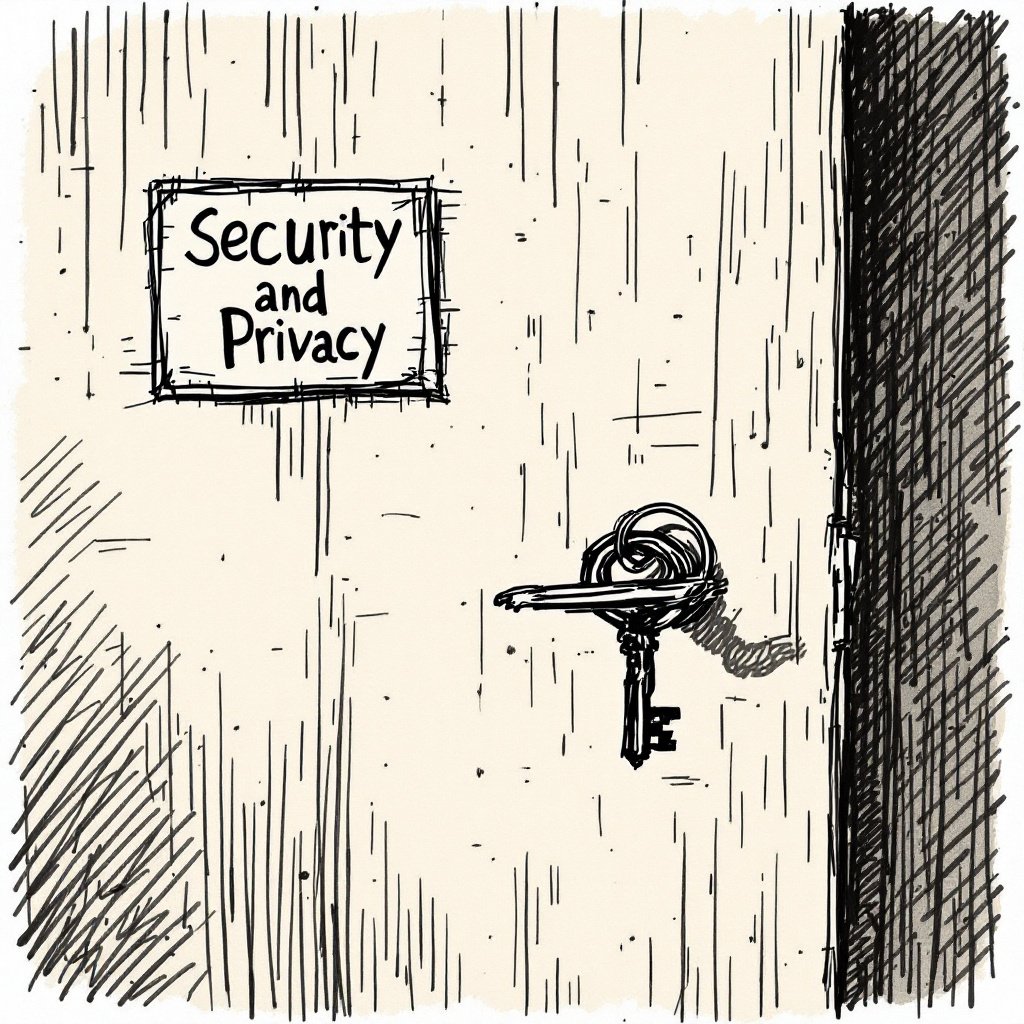
Customer data is the heartbeat of any e-commerce business—or let’s say, the crown jewels. So how do we keep those jewels safe, especially when ChatGPT is working its AI magic in the background?
- Data Encryption: Think of encryption as a padlock, ensuring that no unauthorized eyes can see sensitive customer data. With ChatGPT, make sure that every interaction is encrypted to lock down customer inputs like email addresses or payment details.
- Secure Communication Channels: Have you ever sent crucial information over an unprotected Wi-Fi network? (Let’s hope not!) Similarly, any interaction with ChatGPT should operate over secure communication channels. Look out for SSL certificates and end-to-end encryption.
- Data Anonymization: While ChatGPT can process queries with impressive efficiency, ensure it doesn’t store personal identifiers unnecessarily. An anonymized dataset protects user privacy while keeping functionality intact.
Still worried about data security with ChatGPT? This article explains more about ChatGPT’s privacy policies and encryption.
Compliance with Regulations
E-commerce isn’t just about creating a slick user interface or dazzling customers with pretty product photos. There’s a lot of legal fine print—and data privacy ranks high on that list. When integrating ChatGPT into your store, complying with laws like GDPR (General Data Protection Regulation) and CCPA (California Consumer Privacy Act) isn’t just smart; it’s mandatory.
Here’s how to cover your legal bases:
- Understand GDPR and CCPA Requirements:
- GDPR: Applies if you handle data from EU residents. Users have rights to access, correct, or delete their personal data.
- CCPA: Mostly for US-based businesses handling California residents’ data. Transparency is key—customers need to know what data you collect and why.
- Obtain Proper Consent: ChatGPT interactions often feel conversational, so your users need to know when their data is being used—and agree to it. Implement clear opt-in forms or policies whenever personal data is at play.
- Regular Audits: Think of audits as spring cleaning for your data practices. Regularly review how customer data is processed and stored to ensure compliance with evolving laws.
For detailed insights into data privacy with ChatGPT, check out this helpful guide on enterprise privacy at OpenAI.
By implementing strict privacy measures and respecting global data laws, ChatGPT becomes more than a tool—it becomes a trustworthy partner in the e-commerce journey.
🌟Future Trends: ChatGPT and E-commerce
When imagining the future of e-commerce, one thing’s for sure—AI-powered tools like ChatGPT aren’t just a tech novelty; they’re flipping the rulebook on how online businesses operate. We’re witnessing innovations that shift customer expectations and force businesses to pivot—quickly. Let’s break down what this shift means for e-commerce brands aiming to stay ahead of the curve.
AI Advancements and Market Adaptation
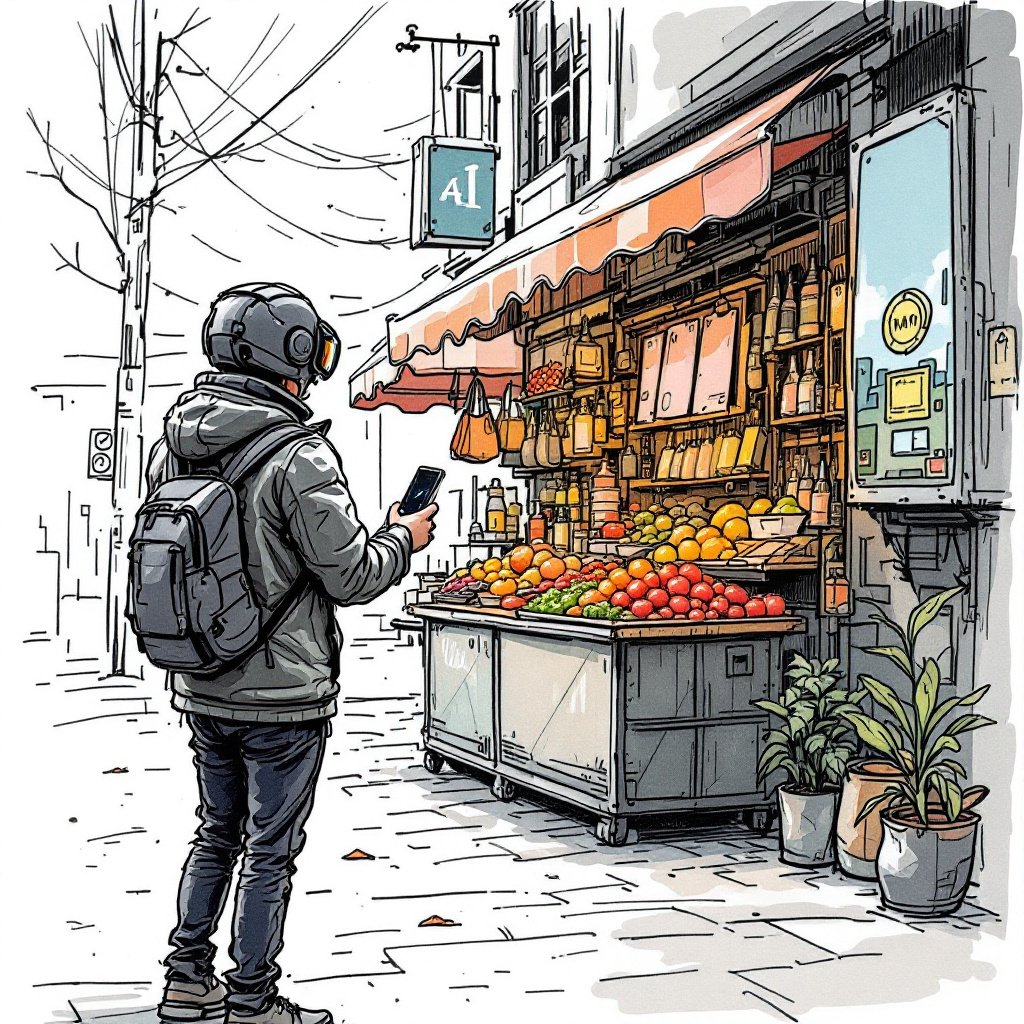
AI is the e-commerce tool we didn’t know we needed. It boosts personalization, fixes workflows, and handles customer issues fast. But before diving in, businesses need a solid plan.
Here’s how we can prepare:
- Enhanced Automation: Automating repetitive tasks is a no-brainer, but integrating AI-driven personalization pushes it to the next level—tracking even subtle behavioral trends.
- Job Reformation, Not Elimination: AI isn’t here to take jobs; it’s here to reshape roles. Customer service teams adopt AI as a co-worker, focusing their attention on complex, high-emotion tasks rather than mundane queries.
- Flexible Adaptations: No “one-size-fits-all” exists. Local businesses might aim for hyperlocal personalization with ChatGPT, while global enterprises may prioritize AI-powered, multilingual chat systems.
The Role of ChatGPT in Omnichannel Strategies
Omnichannel strategies—sounds fancy, right? But essentially, it’s about meeting your consumers wherever they are: Instagram, your website, email, or that SMS campaign you forgot you subscribed to. ChatGPT streamlines this process.
Here’s what excites us the most:
- Consistency Across Platforms: Whether a customer is talking to your store’s chatbot on Messenger or texting your SMS number, ChatGPT creates consistent, brand-aligned answers.
- Elevated Personalization: It doesn’t just know their name; it remembers preferences, order history, and even queries from months ago, fueling seamless engagement.
- Efficient Issue Resolution: Lost package? ChatGPT can ping users with updates across various platforms, enhancing customer trust—not to mention sales retention.
By strategically implementing ChatGPT into omnichannel modes, businesses basically tell customers, “We’ve got your back—everywhere!” The future isn’t just about single-channel mastery; it’s about creating an interconnected ecosystem that syncs flawlessly.
Conclusion
At this point, ChatGPT is officially your new co-pilot. We love that it turns e-commerce marketing, product descriptions, and even website design into easy, actionable steps. Plus, AI lets you work smarter—not harder. And who doesn’t love saving time for, you know, sipping that celebratory cup of coffee once the sales roll in?
Start small. Tinker. Ask questions. Experiment. Your e-commerce store’s glow-up starts now—and with ChatGPT in your corner, there’s nothing stopping you from crushing the competition while keeping things fun and creative.
Frequently Asked Questions About ChatGPT for Ecommerce
1. Is ChatGPT good for writing product descriptions?
Yes! ChatGPT generates engaging, SEO-friendly product descriptions in seconds. Just provide key details, and it’ll do the rest.
2. Is using ChatGPT expensive for small businesses?
The cost depends on your usage, but OpenAI offers flexible pricing. Evaluate your needs before subscribing to higher-tier plans.
3. Can ChatGPT help with marketing emails for my store?
Totally. From attention-grabbing subject lines to personalized email copy, ChatGPT simplifies email marketing.
4. What about multilingual support for international markets?
ChatGPT supports multiple languages, so you can easily cater to global customers without hiring translators. Check out the best ChatGPT plugins we’ve compiled for you.
5. Is ChatGPT secure for ecommerce use?
Yes. OpenAI takes data security seriously, but remember not to share sensitive customer information to stay compliant with privacy laws.
6. Does it work well for small product catalogs or niche brands?
Absolutely. Whether you sell 10 products or 10,000, ChatGPT can scale to suit your needs and focus on the specifics of your offerings.
7. Does ChatGPT require any coding knowledge to get started?
Not really. Many ecommerce platforms make it plug-and-play, but having someone tech-savvy on hand won’t hurt for complex setups.
How frequently should I update the AI’s training data?
Every 6-12 months is ideal. Keep ChatGPT updated with new product details, customer FAQs, and promotional campaigns for the best performance.

